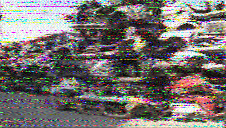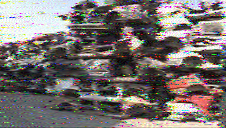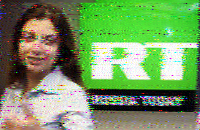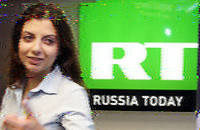Last week, I wrote about my experiences decoding the VOA Radiogram program on shortwave. Once again this week, I decoded three different VOA Radiogram broadcasts.
The February 28-March 1 show was an anniversary of sorts, marking two years of VOA Radiogram and the 100th program. It featured these stories:
- Cheaper method of scrap metal separation
- University students analyze Russia’s RT TV
- Kim’s comments about two years of VOA Radiogram
I found the third story particularly interesting. It was Kim Andrew Elliot’s thoughts about two years of VOA Radiogram and what its future might hold.
Results
Here are the images I decoded Saturday at 1600 UTC (Saturday at 11:00 AM EST) on 17860 kHz:



![]()
Reception of this broadcast was very poor here, with Kim Andrew Elliot’s voice introduction barely audible. But I found it remarkable that, even with these poor conditions, the text still decoded almost perfectly. The pictures suffered more than the text, but were still recognizable.
The picture that accompanied the story “University students analyze Russia’s RT TV” (of Margarita Simonyan, editor-in-chief of RT) was the clearest of the set. It did pick up some sort of line pattern interference which makes it look a bit like a photograph of a CRT television.
Here are the images I decoded Sunday at 0230 UTC (Saturday at 9:30 PM EST) on 5745 kHz:



![]()
Reception was much better for this broadcast. These pictures were clearer, with the exception of the Margarita Simonyan image for some reason.
Here are the images I decoded Sunday at 1930 UTC (Sunday at 2:30 PM EST) on 15670 kHz:



![]()
As usual, this was the broadcast which gave me the best reception. Text decoding was 100% and these pictures were the clearest I decoded.
An image comparison
I’m always interested in the differences between the quality of the decoded images. For a comparison, here is the picture of Margarita Simonyan from the original Radio Free Europe/Radio Liberty article, cropped and resized to match the version sent during VOA Radiogram:

Compare that against the images I received this week:



Even with the interference, I think all three images decoded pretty well.
I find decoding VOA Radiogram to be an interesting challenge. If you have a shortwave radio, you might want to give it a try.
Great gallery of photos! I like the image comparison at the end. DXing has always been my radio interest but this decoding stuff sounds neat. I might give it a try if my computer skills weren’t lacking.
Evan,
Decoding doesn’t require that much in the way of computer skills, just some persistence. You can find out more about the software you would need at the VOA Radiogram site.